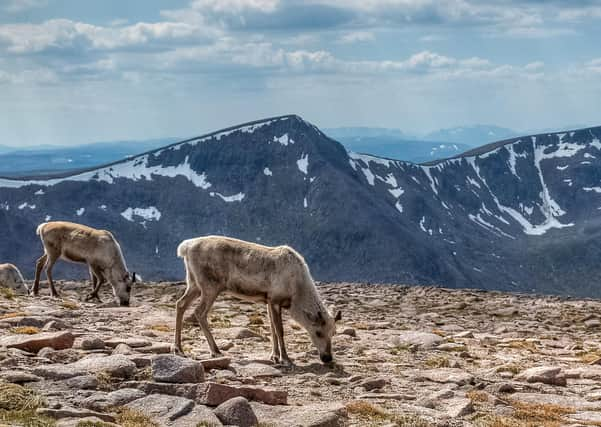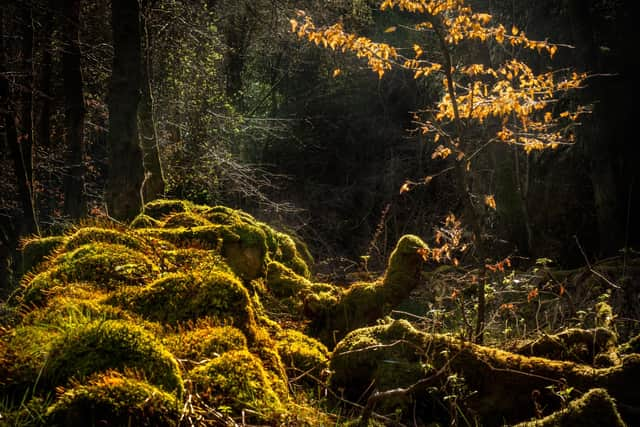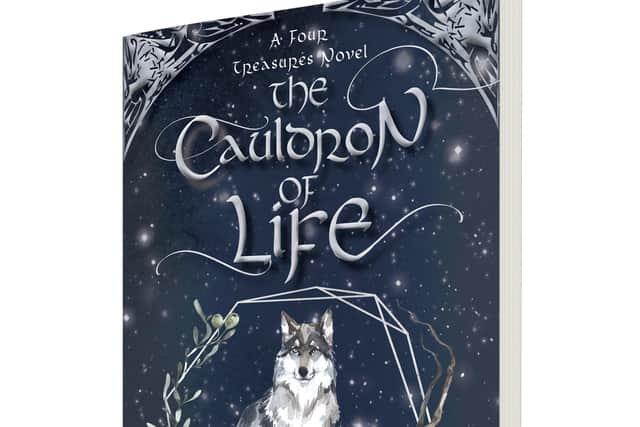Harsh and beautiful – how Scotland’s landscape inspired its storytelling


Everything you know about yourself, your community, the world, is fundamentally a story.
We tell ourselves stories for protection. Don’t go into the woods because people get lost in there. We tell ourselves stories to feel like we belong. Remember that time we all went for ice cream together? We tell ourselves stories to give us a sense of self. My favourite colour is yellow. But, by far, the stories I like best are the ones that scare me. I love the macabre, the unexplained and the chilling. That’s why I love Scottish mythology.
Advertisement
Hide AdAdvertisement
Hide AdThe myths and legends of any culture are stories meant to warn and inform. But I feel that, in Scottish mythology particularly, our stories are especially frightening. In our tales, no matter where you go, there is something lurking in the shadows waiting to strike. And that’s probably a direct result of our landscape. Scotland is a country of mysterious glens, tall mountains and deep lochs. There are millions of places a monster could be hiding, so no wonder many of our myths revolve around strange creatures who will gobble up children if they wander off the path.


I love reading fantasy, but with each book I read, I discovered there was something missing: our landscape, our creatures, our myths. Most stories tend to centre on English, Welsh or even Greek mythology. So, when I wanted to write a fantasy book, I looked no further than the Scottish stories I knew and loved.
Take the kelpie for example. Don’t go near the loch or river, or the kelpie will get you was probably a warning told to children all over Scotland. Kelpies are creatures that live in bodies of water and eat humans. The legends say they appear as whatever might be most appealing to their prey. Usually this was a horse. In the stories, two children would be walking alone when they spot a horse. One child would rush to the animal, intent on riding it back home, while the other would heed the warnings and would stay far away. The child who jumped on the kelpie’s back would quickly find they were stuck. Then the monster would charge back into the deep water, drowning and then eating their victim. This story was meant to teach youths many important lessons. Stay away from deep water. If something looks too good to be true, it probably is. It’s the exact opposite of the saying: never look a gift horse in the mouth. There are also interesting parallels between that of a kelpie, and another water creature: The Loch Ness Monster. Nessie is famous, but we’ve never been able to find her. Scientists will tell you that Loch Ness is too deep to hold a creature of her size. But what if she is actually a kelpie; a shape shifting spirit who can appear as what we find most appealing? But who exactly is wishing for a plesiosaur so fervently?
Then there are selkies. We share tales of these shape shifting seal people with Iceland and Scandinavia. Unlike the kelpies, selkies only have two forms: seals and humans. They are also portrayed as friendlier, though like most Scottish stories, there is a hint of malice to them. Male selkies turn into handsome men and can seduce women, stealing them away. Female selkies are more easily captured. Stories say that if someone can find their discarded seal skin on the beach, the selkie won’t be able to turn back or run away. Men can keep a selkie wife by their side in this way and they apparently make good mothers. But as soon as the selkie finds her seal skin again, she will slip back into her seal form and will disappear back to the ocean, leaving behind her family without so much as a backwards glance. Legends say you can tell if a selkie has been around because their children will have webbed feet. Selkies seemed like the perfect characters to include in a Scottish fantasy novel. Finding them in stories is rare and they had a wildness to them that inspired some of my characters. As soon as I read their story, I knew I had to write about them.
Am Fear Liath Mòr is a legend local to me. The name means “The Big Grey Man” and he’s supposed to haunt the passes of Ben Macdui, the highest mountain in the Cairngorms. Think of him as the Scottish yeti or bigfoot. Climbers have reported feeling a presence on the mountain, and in some cases have spotted a strange humanoid standing at over ten feet tall. But it was one part of this legend that sparked my interest: mountaineers will often hear the sounds of crunching footsteps following them. I imagined how it would feel, climbing in the mist, feeling as if someone was watching me, listening to footsteps that weren’t my own. Though the various sightings have been explained away by psychologists as hallucinations brought about by exhaustion or isolation, there have been a few pictures captured and footprints found. And if The Big Grey Man’s counterparts have been spotted all over the globe, surely there must be something more to this legend?


Then there was the myth that kick started my story: The Changeling. In The Stone of Destiny, my protagonist, Ailsa, is shunned from society because she is considered a changeling. The changeling story is found throughout Europe in different forms. In Scotland, they are fairy children that are left in place of human babies. They look exactly like the baby, except they are sickly and fussy. But unlike other countries, where the stolen babies were brought up to become servants to the fairies, the legend in Scotland has a more terrifying distinction. It is said that they are taken to pay a tithe to Hell; a payment to the devil himself. It was a story used to explain the appearance of sudden unexplained diseases. It was also later used as a warning to Christians. If a child was baptised, the story said, they could not be taken by the fairies. Unfortunately, disabled or sick children were sometimes subjected to harsh treatment after being accused of being changelings. People fear what they do not know and from these fears grow the legends we hear today.
There are many other Scottish myths, like those of the Bean-nighe or the Nuckalavee. Some of them are light-hearted fairy tales, but most are dark and mirror the brooding Scottish landscape. Stay safe, stay home, the legends warn. There are monsters out there. It’s funny how now, hundreds of years after these stories were first told, nothing much has changed. I’m a sceptic who likes to hear scary tales. I don’t tend to believe in monsters – at least, not the ones who aren’t human. Still, in the gloom of a Scottish forest, or on a mist-covered mountain top, sometimes you can’t help but to let your imagination run wild. In times like this, we can appreciate the beauty of our scenery, but also the darkness, and those stories of legend seem just a wee bit more real.
The Cauldron of Life, the second title in The Four Treasures series, is published on 8 October by Cranachan, priced £8.99
Comments
Want to join the conversation? Please or to comment on this article.